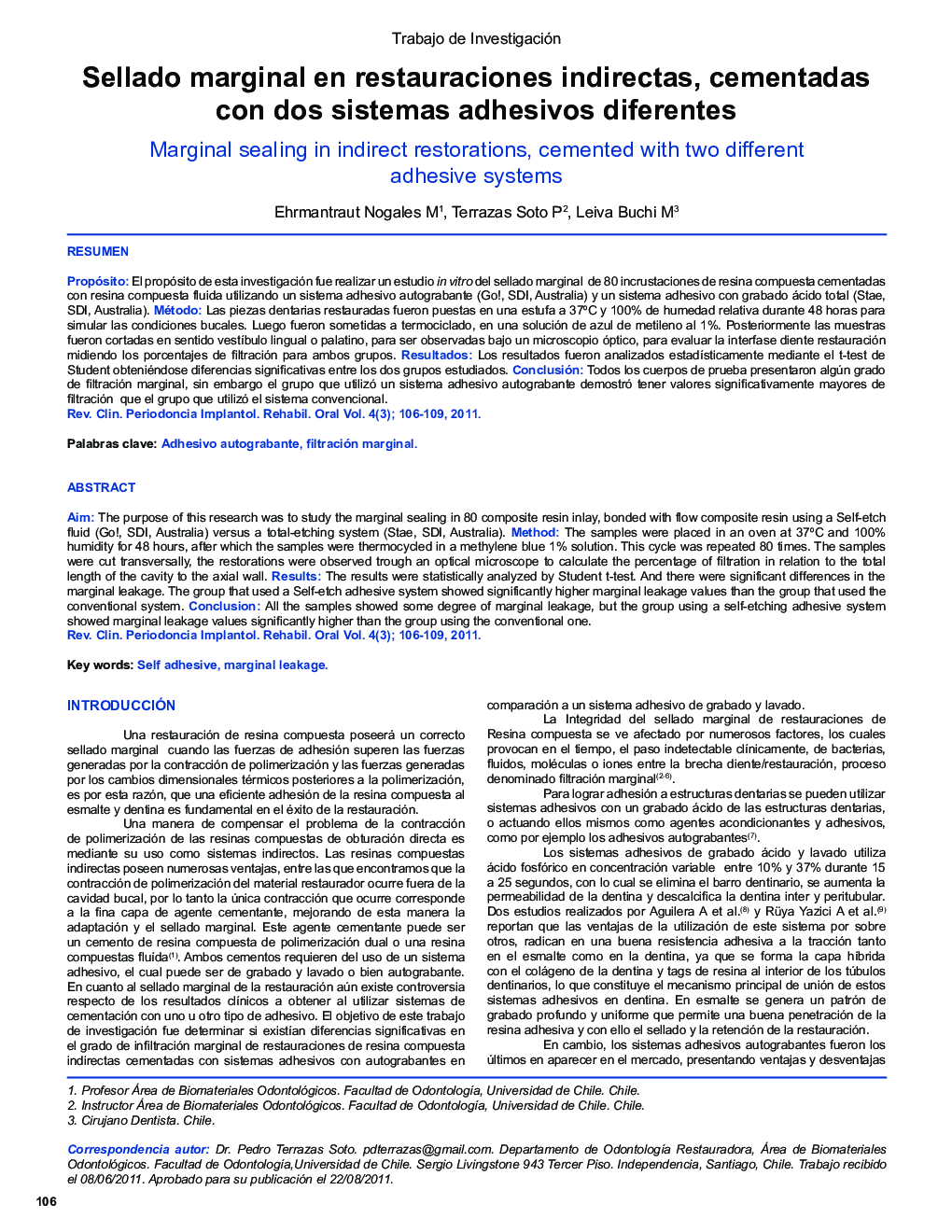| Article ID | Journal | Published Year | Pages | File Type |
|---|---|---|---|---|
| 3172438 | Revista Clínica de Periodoncia, Implantología y Rehabilitación Oral | 2011 | 4 Pages |
ResumenPropósitoEl propósito de esta investigación fue realizar un estudio in vitro del sellado marginal de 80 incrustaciones de resina compuesta cementadas con resina compuesta fluida utilizando un sistema adhesivo autograbante (Go!, SDI, Australia) y un sistema adhesivo con grabado ácido total (Stae, SDI, Australia).MétodoLas piezas dentarias restauradas fueron puestas en una estufa a 37°C y 100% de humedad relativa durante 48 horas para simular las condiciones bucales. Luego fueron sometidas a termociclado, en una solución de azul de metileno al 1%. Posteriormente las muestras fueron cortadas en sentido vestíbulo lingual o palatino, para ser observadas bajo un microscopio óptico, para evaluar la interfase diente restauración midiendo los porcentajes de filtración para ambos grupos.ResultadosLos resultados fueron analizados estadísticamente mediante el t-test de Student obteniéndose diferencias significativas entre los dos grupos estudiados.ConclusiónTodos los cuerpos de prueba presentaron algún grado de filtración marginal, sin embargo el grupo que utilizó un sistema adhesivo autograbante demostró tener valores significativamente mayores de filtración que el grupo que utilizó el sistema convencional.
AimThe purpose of this research was to study the marginal sealing in 80 composite resin inlay, bonded with flow composite resin using a Self-etch fluid (Go!, SDI, Australia) versus a total-etching system (Stae, SDI, Australia).MethodThe samples were placed in an oven at 37°C and 100% humidity for 48 hours, after which the samples were thermocycled in a methylene blue 1% solution. This cycle was repeated 80 times. The samples were cut transversally, the restorations were observed trough an optical microscope to calculate the percentage of filtration in relation to the total length of the cavity to the axial wall.ResultsThe results were statistically analyzed by Student t-test. And there were significant differences in the marginal leakage. The group that used a Self-etch adhesive system showed significantly higher marginal leakage values than the group that used the conventional system.ConclusionAll the samples showed some degree of marginal leakage, but the group using a self-etching adhesive system showed marginal leakage values significantly higher than the group using the conventional one.
